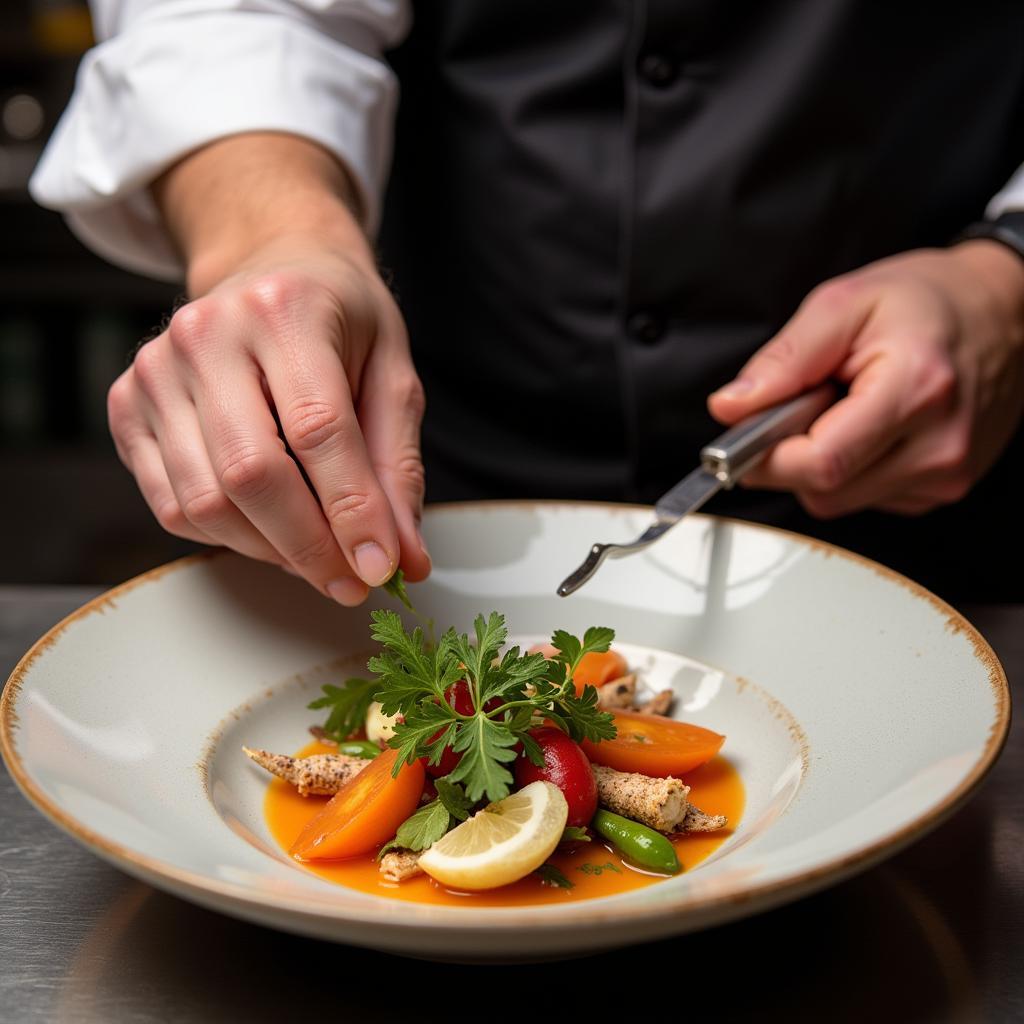Taste and flavor are often used interchangeably, but in the culinary world, they represent distinct sensory experiences. Understanding the difference between taste and flavor can elevate your cooking and dining experiences. Check out this comparison of homemade vs store-bought yogurt: homemade yogurt vs store bought.
Decoding Taste: The Foundation of Flavor
Taste refers to the basic sensations detected by the taste buds on our tongue. These basic tastes are sweet, salty, sour, bitter, and umami. They provide the fundamental building blocks upon which more complex flavors are built. Imagine the simple sweetness of sugar, the sharp tang of vinegar, or the savory depth of umami in a ripe tomato. These individual sensations are pure tastes.
The Five Basic Tastes
- Sweet: Often associated with energy-rich foods, sweetness signals the presence of carbohydrates.
- Salty: Essential for maintaining fluid balance, saltiness indicates the presence of sodium chloride.
- Sour: Typically found in acidic foods, sourness can signal spoilage or unripeness.
- Bitter: Often associated with toxins, bitterness can be a warning sign. Many beneficial compounds, like those found in dark chocolate, are also bitter.
- Umami: A savory taste, umami is often described as meaty or brothy. It indicates the presence of glutamate, an amino acid.
Exploring Flavor: A Symphony of Senses
Flavor, on the other hand, is a much more complex and nuanced experience. It’s a combination of taste, aroma, texture, temperature, and even visual cues. Think about biting into a juicy, ripe peach. You perceive the sweetness, but also the fragrant aroma, the velvety texture, the slight tartness, and the vibrant color. It’s this symphony of sensations that creates the overall flavor experience. For those interested in comparing different types of potatoes, have a look at this article: potato pearls vs flakes.
The Role of Aroma
Aroma plays a crucial role in flavor perception. When you chew food, volatile compounds are released and travel up the back of your throat to your olfactory receptors in your nose. This is called retronasal olfaction, and it’s why holding your nose while eating drastically diminishes the flavor of food.
Texture and Temperature
The texture and temperature of food also contribute significantly to flavor. A crispy fried chicken offers a different flavor experience compared to a tender poached chicken, even if they’re seasoned identically. Similarly, a hot soup will have a more intense flavor than a cold soup. This comparison of different yeast types might be helpful for baking enthusiasts: dry yeast vs liquid yeast.
Taste vs Flavor: Why the Distinction Matters
Understanding the difference between taste and flavor is crucial for creating delicious and well-balanced dishes. By considering all the elements that contribute to flavor, chefs can craft culinary masterpieces that tantalize the senses. For example, a chef might balance the sweetness of a dessert with a touch of salt to enhance the overall flavor profile.
“Flavor is not just about the ingredients,” says renowned chef, Antoine Dubois, “it’s about the interplay of all the senses. It’s about creating an experience.”
 Creating Delicious Dishes
Creating Delicious Dishes
Conclusion: Savoring the Complexity of Taste and Flavor
While taste provides the foundation, flavor is the complete sensory experience that makes food truly enjoyable. By appreciating the nuances of taste and flavor, we can elevate our appreciation for the culinary arts and savor every bite. For those curious about different orange varieties, you might enjoy reading this: blood orange vs navel orange.
FAQs
- What are the five basic tastes?
- How does aroma affect flavor?
- What is the difference between taste and flavor?
- Why is understanding taste and flavor important in cooking?
- How do texture and temperature influence flavor?
- Can taste and flavor be manipulated to create specific culinary experiences?
- What is retronasal olfaction?
“A true culinary artist understands the subtle dance between taste and flavor,” adds culinary historian, Dr. Elena Rodriguez, “They know how to orchestrate these elements to create a symphony of sensations.”
Need assistance? Contact us at Phone Number: 0372999888, Email: [email protected] Or visit us at: 236 Cầu Giấy, Hà Nội. We have a 24/7 customer support team.